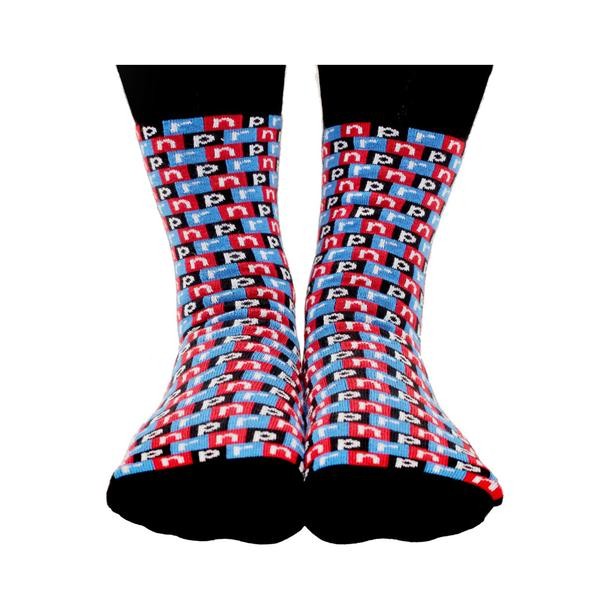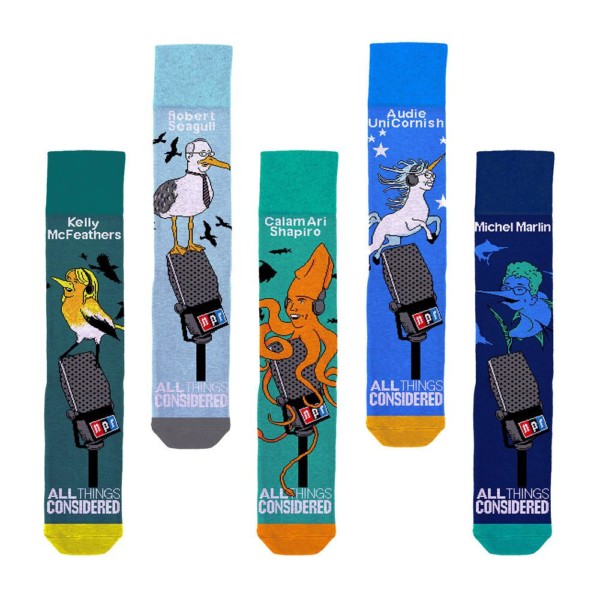Sign up for The Media Today, CJR’s daily newsletter.
This subscription season’s New Yorker tote bag has been compared to a Birkin bag, which, if you are a woman of a certain age and cultural capital, is a very big deal.
The bag’s cachet offers an important lesson for the news industry—people still like news stuff, even if they aren’t exactly feasting on the news itself. And objects of news can even help build trust.
New merch offerings include a plastic container for holding M&Ms candies (or marijuana, hint-hint) via The Outline, fancy socks (from NPR), StarTribune “First Edition” whole-bean coffee to benefit the Minnesota Journalism Center, and an infamous line of nutritional supplements with names like Caveman True Paleo Formula and Super Male Vitality from Infowars. BuzzFeed, always a trendsetter, is planning a broader partnership with a “massive brick and mortar retailer,” and offering a popular lip-gloss fidget-spinner called Glamspin through a partnership with Sephora. (Buzzfeed’s first smart appliance, a hot plate, is also said to be on the way.)
ICYMI: The one “media world mystery” that remains unsolved around Weinstein scandal
Quartz, which until recently supported itself with digital advertising and events, launched its first book, The Objects that Power the Global Economy, retailing for $35. Demand was so high the book is now in a second press run and new copies are expected to ship in late November. A coming new lifestyle vertical, Quartzy, may give the site additional opportunities for branded product promotion.
Alternatives to advertising?
Some of the recent attempts at news swag have paid off. BuzzFeed’s Glamspin was the ninth best-seller on Sephora.com in September, according to Nieman Lab.
But if such product tie-ins aren’t done thoughtfully, or seem out of sync with the brand, they could backfire, says Josh Topolsky, founder of The Outline. “Fidget spinners are so fucking obvious,” he tells CJR. “I push back strongly on swag as this idea of junk that has a logo on it. We want to make things people actually want to buy that are cool and interesting, even if you don’t care about The Outline.”
Note Topolsky’s comment: The Outline has cool stuff, but the merchandise efforts are not just about promoting The Outline’s journalism but also about creating an image of The Outline as cool, too. Curiously, BuzzFeed’s lipgloss fidget spinner does not have the news organization’s name on it, so it’s hard to say whether this is stealth branding or the beginnings of some other merchandising trick BuzzFeed has coming down the line.
ICYMI: A newspaper’s shocking teacher investigation
Perhaps it’s unconventional to think mainstream news organizations might take cues from partisan sites, but since more name-brand advertisers are staying away from alt-right news sites, some of them turned to other revenue streams, including from merchandise.
Breitbart collects revenue instead from a store offering a Steve Bannon fidget spinner, a Breitbart patriot-logo T-shirt, and a “B-strong” koozie.
Infowars, too, constantly promotes products that Alex Jones says keep the lights on, like vitamins and apocalypse preparedness gear such as emergency storable food. John Oliver mocked Jones for his politics as much as his product placement in an episode this summer, referring to Infowars-endorsed and branded powders and pills as “nutraceuticals.”
Old-school branding
Branding is nothing new for media organizations, particularly NPR, which consistently has created iconic products that are symbolic stand-ins for a particular lifestyle choice.
NPR launched an online store in 2000. In 2002, it launched the the Nina Totin-bag, which Barbara Sopato, NPR’s director of consumer products and e-commerce, says is “arguably one of the most famous public radio totes.” I counted 14 tote bags available on NPR’s store site, if you include the grocery-bag tote.
However, NPR reps stressed that the NPR brand experience should not just be thought of as limited to totebags, despite their iconic and off-mocked status.
The new hit for NPR is socks. “We joined the sock revolution last year, and our custom socks are quickly gaining momentum,” Sopato says. You can buy socks that feature puns inspired by the names of All Things Considered hosts: Kelly McFeathers, Michel Marlin, Calamari Shapiro, Audie Unicornish, and Robert Seagull.
Other news organizations are avoiding the merch game. You might think that The Washington Post would jump on the merch bandwagon given its association with Amazon, but the newspaper has only a few offerings, and they appear on Zazzle. “It’s not an actual store you would think of that way,” says spokeswoman Shani George. One must-have: A “Democracy Dies in Darkness” T-shirt.
And The New York Times has actually cut back its offerings to focus on traditional customer favorites like eprints, birthday books, and photography. According to Steve Mayne, the Times’s executive director of commerce, the newspaper is “unlike other publishers who are looking at e-commerce as a means of bolstering their bottom line” and instead is focusing on brand experience.
Mind you, you’ll look sharper experiencing that brand in a New York Times baseball cap, on sale on the site for $45.
ICYMI: The NYT tweet on books by women that “didn’t play well”
Has America ever needed a media defender more than now? Help us by joining CJR today.




